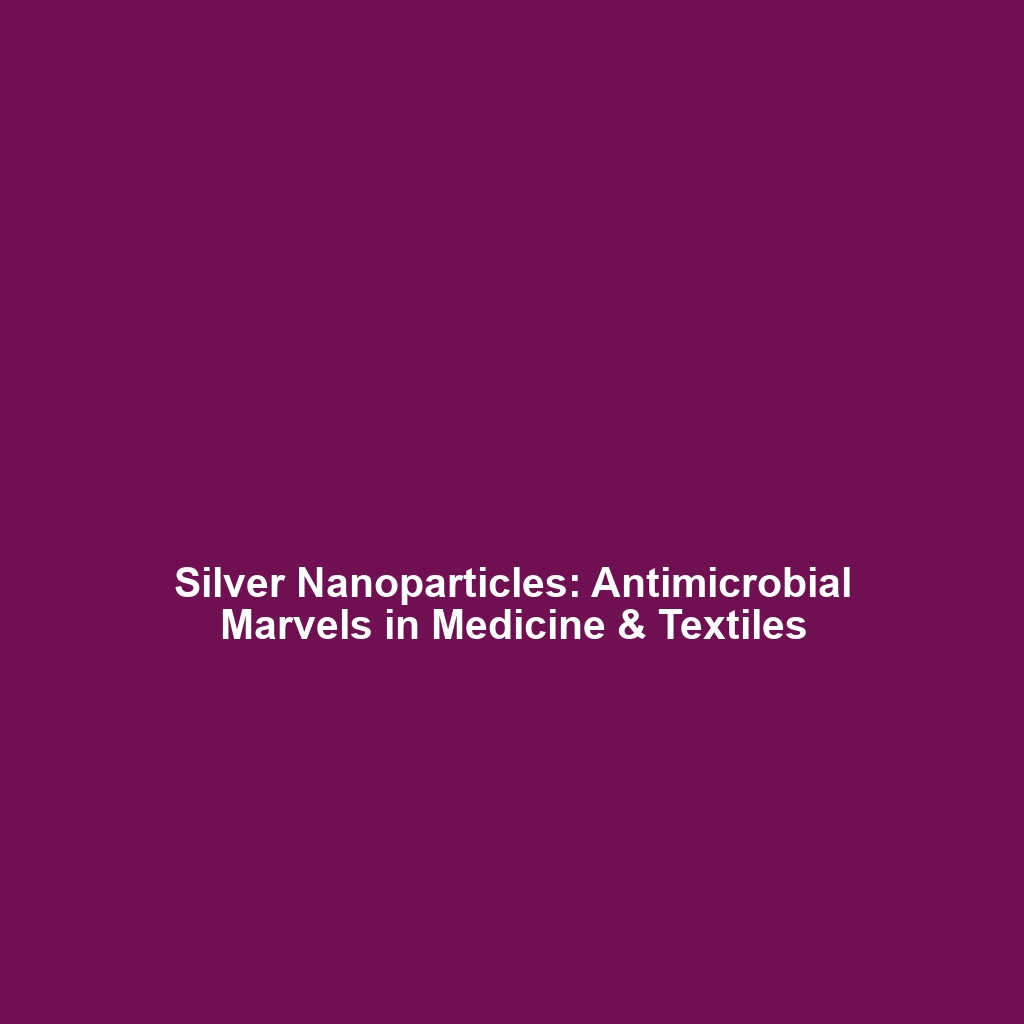Silver Nanoparticles: Antimicrobial Advancements in Nanomaterials
Introduction
Silver nanoparticles (AgNPs) have garnered significant attention within the realm of advanced nanomaterials due to their remarkable antimicrobial properties. These tiny, particles measuring between 1 to 100 nanometers in size, demonstrate potent bactericidal effects against a variety of pathogens, making them invaluable in diverse applications, particularly in the medical and textile industries. The shift towards nanotechnology has elevated the effectiveness of traditional treatments, prompting researchers and industries alike to explore innovative methods of integration and functionality, thereby enhancing product performance and safety in healthcare and consumer applications alike.
Key Concepts
Understanding silver nanoparticles’ antimicrobial characteristics requires a grasp of several key concepts:
Antimicrobial Mechanisms
- Silver ions interact with bacterial cell membranes, disrupting cellular functions.
- They generate reactive oxygen species that harm bacterial DNA and proteins.
Nanomaterial Classification
Silver nanoparticles fall under the category of advanced nanomaterials due to their unique size-dependent properties, which differ significantly from bulk silver’s functionalities.
Applications and Real-World Uses
The applications of silver nanoparticles in medical and textile industries are vast:
Medical Applications
- In wound dressings, AgNPs provide antimicrobial protection and promote healing.
- They are utilized in coatings for surgical instruments to reduce infection risks.
Textile Industry
- AgNPs are incorporated into fabrics to create self-sterilizing clothing.
- They are used in medical textiles, such as bandages and surgical garments, to prevent microbial contamination.
Current Challenges
Despite their benefits, there are several challenges of silver nanoparticles that researchers face:
- Potential toxicity to human cells and the environment.
- Lack of comprehensive understanding of long-term effects.
- Variability in manufacturing methods affecting product consistency.
Future Research and Innovations
Future research is crucial in addressing these challenges and expanding the role of silver nanoparticles in advanced nanomaterials. Innovations include:
- Development of biodegradable silver nanoparticles to mitigate environmental concerns.
- Research into targeted delivery systems that enhance antimicrobial efficacy while minimizing toxicity.
- Emerging techniques such as 3D printing that incorporate AgNPs into new product designs.
Conclusion
In conclusion, silver nanoparticles health and textile applications showcase their significant role in advancing the field of advanced nanomaterials. As research progresses, addressing current challenges will pave the way for even broader applications and innovations. For those interested in further explorations of this field, visit our articles on advanced nanomaterials and medical applications of nanotechnology.

